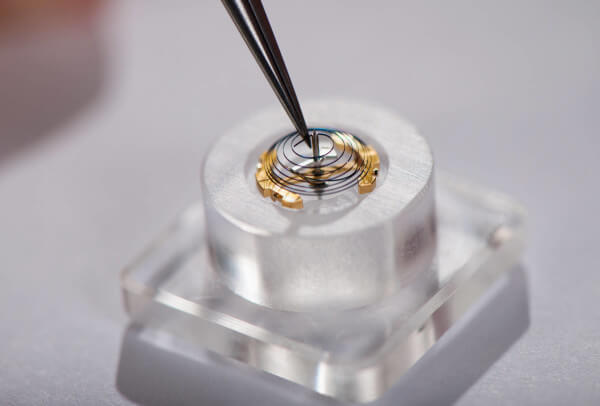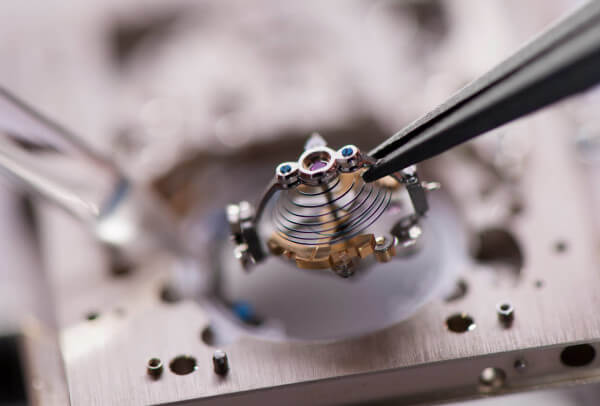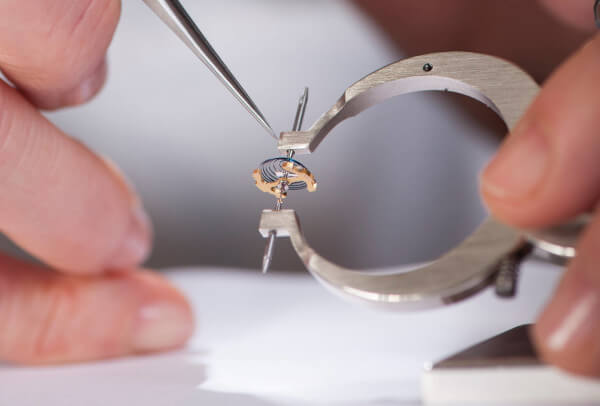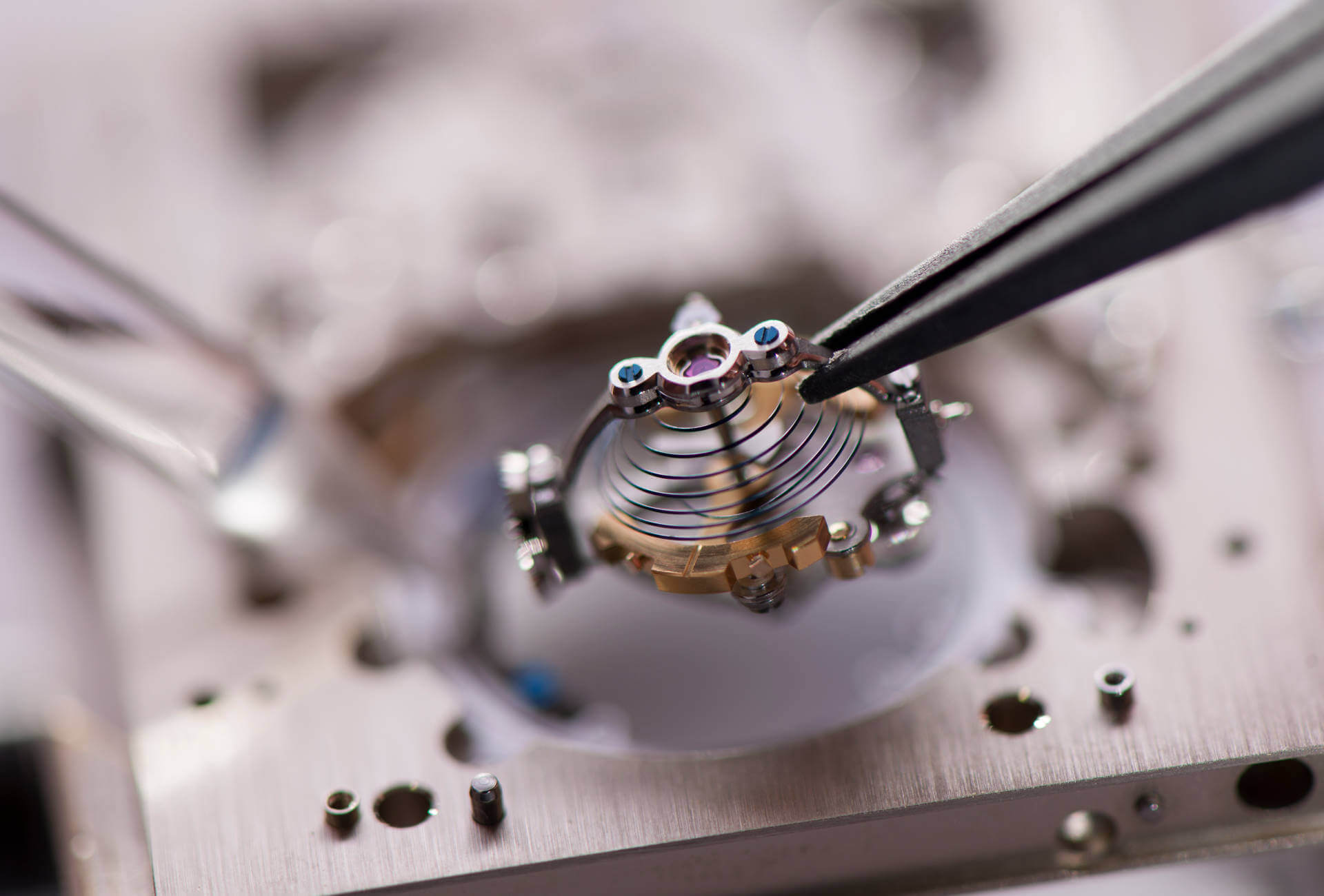In the beginning there was darkness and void; in the beginning there was a watch without that all-important spiral spring. A spring no thicker than a human hair. In fact early Renaissance watchmakers all but turned their hair grey in their attempts to give a more or less regular rate to the fabulous mechanisms they concealed inside all manner of objects to be hung around the neck or worn at the waist. Because they were rarely still, and their oscillator therefore subject to constant disturbances, these miniature marvels were woefully imprecise. The capillary metaphor takes on its full significance here, as the very first embryo of a balance spring (or hairspring, as it’s appropriately known) was a bristle. It’s an oft overlooked fact that prior to the invention of this delicate metal component – shaped like a mainspring with its Archimedean spiral – when the balance had finished its semi-oscillation, it took the elasticity of pig or wild boar hair to swing it back the other way. Hence the first watchmakers’ verge escapements relied on an organic matter to maintain their oscillations: enough to make you tear your hair out, as the least variation in atmospheric humidity altered the quality of these mechanisms’ already vastly imprecise adjustments.

A revolution in the making
This impractical and rudimentary system with its miscellaneous hairs and bristles couldn’t help but intrigue scientists and scholars of the seventeenth century, dubbed the Grand Siècle by historians. Because dates are not enough – history needs names to give itself substance – we remember the learned men who were first to consider the watch’s regular functioning, among them Galileo, Newton, Huygens, Abbot Jean de Hautefeuille and the English mathematician and physicist Robert Hooke. They all sought ways to improve the frankly dire regularity of the timepieces of their day. Spurred on by their renown and the desire to be remembered for posterity, as of the 1630s these men of science began looking for a means to rationalise the clock’s rate and, consequently, that of all portable timekeeping instruments.
By common consensus, Christiaan Huygens is credited with the invention of the balance spring on January 23rd 1675.
Here was a challenge on a par with the quest for the philosopher’s stone or perpetual motion. Early on, the astronomer Galileo imagined a machine which, however imperfect, built on his observations of the isochronism of moving objects when made to oscillate. The alternative for clocks came in 1659, courtesy of Dutch mathematician and astronomer Christiaan Huygens who suspended a pendulum from a thread and introduced a non-rigid connection between it and the escapement. This left the thorny issue of how to ensure precise timekeeping in a watch. Blaise Pascal (1623-1662), who is also remembered as the inventor of the mechanical calculator, proposed his solution to the irregular functioning of the balance wheel in 1660. He suggested using a flat spring no thicker than a human hair and connected to the regulating balance wheel to prevent the watch from being thrown off-kilter at the least shock or sudden movement. Watchmakers should have seized upon the idea; instead it fell by the wayside.

The disputed paternity of a major invention
By common consensus, Christiaan Huygens is credited with the invention of the balance spring on January 23rd 1675. This thin, spiral-shaped spring would improve the precision of watches by one decimal. However, ownership of this game-changing innovation was disputed and gave rise to watchmaking’s first real controversy. Having sent an encrypted message to the secretary of the Royal Society in London briefly explaining its development, Huygens was officially declared “inventor of the balance spring”. Other scholars and renowned watchmakers immediately took umbrage. Abbot Jean de Hautefeuille, then aged 28, claimed that he had conceptualised the principle long before Huygens. Isaac Thuret, from whom Huygens had commissioned a prototype watch with balance spring, immediately offered to supply Colbert with a second execution of the invention, this time under his own name. Robert Hooke, himself an inventor of great talent, put aside his reserve to point out that as early as 1665 he had put forward the utility of equipping a watch with a very thin, spiral spring, a claim supported by his drawings.

That Huygens benefited from Hooke’s investigations and that he used his conclusions to advance his own theories leaves little doubt. It should be noted, nonetheless, that this eminent scientist, who also proposed his wave theory of light, invented a component which in combination with a detached escapement (detent or lever) transformed the watch from mechanised ornamentation into scientific instrument. Within the space of a year, all watches without a balance spring were adapted to include this new invention. Whereas seventeenth-century timepieces had previously been out by something like one in twenty-four hours, suddenly they became reliable measuring instruments whose precision varied by just five minutes a day.
The balance spring
Date: January 23rd 1675
Inventor: Christiaan Huygens of the Netherlands
Purpose: To make watches more precise
Weight: Less than 0.05 grams
Application: Isochronism of the oscillations of the balance wheel
Result: Precise timekeeping thanks to the constant amplitude of the balance wheel














